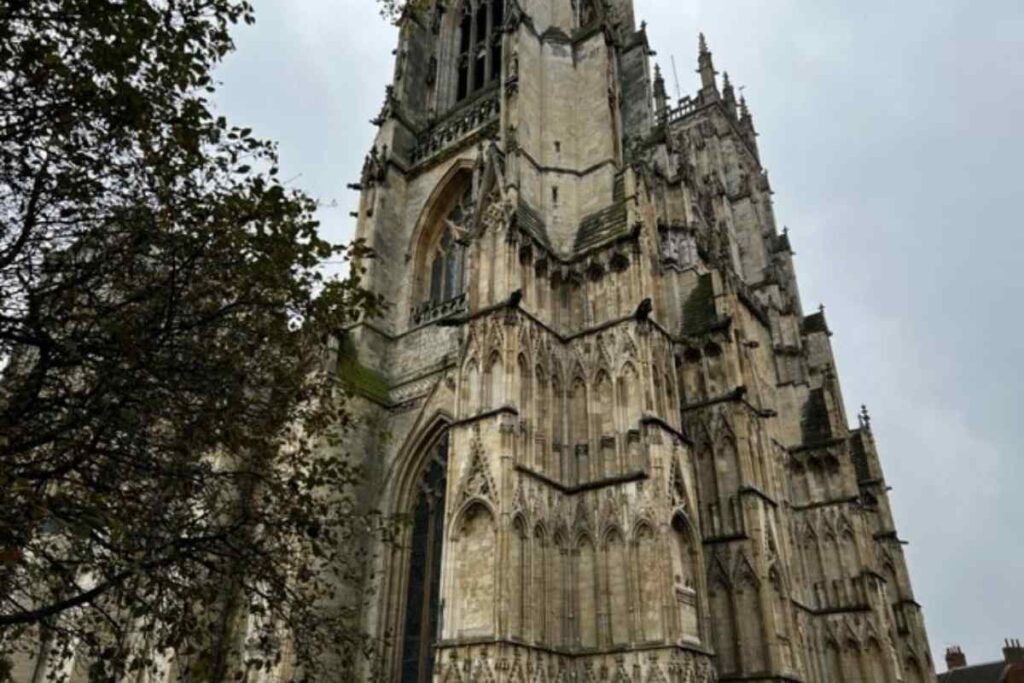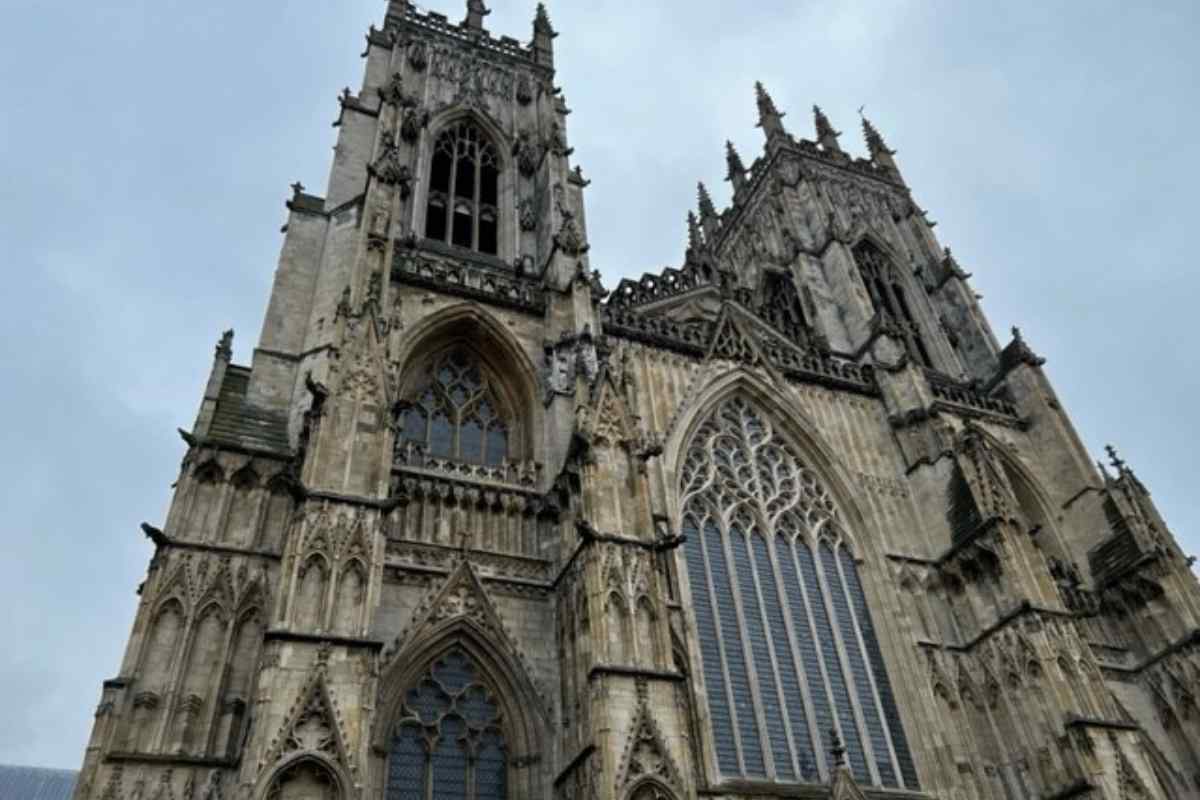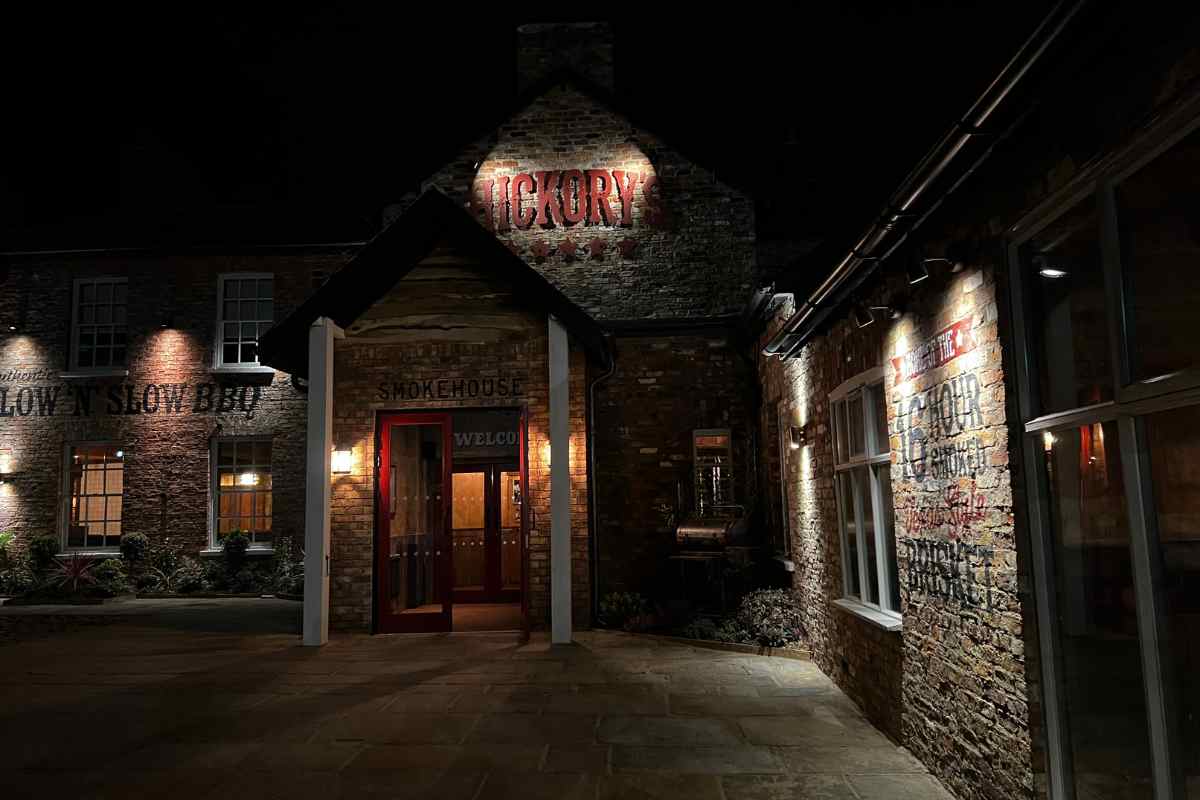In the early hours of July 9, 1984, a bolt of lightning struck York Minster, one of the most iconic cathedrals in England.
The resulting fire caused extensive damage to the cathedral, particularly the South Transept, which was completely destroyed.
The fire was a devastating event for the people of York and for the country as a whole, as the cathedral is a major tourist attraction and a symbol of British heritage.
The cause of the fire was never definitively determined, but it is believed to have been caused by an electrical fault or a lightning strike. The fire spread quickly through the wooden roof of the South Transept, which had been installed during a restoration in the 19th century.
Despite the best efforts of the firefighters, who worked tirelessly to save the cathedral, the fire raged for several hours and caused extensive damage to the building.
The roof of the South Transept collapsed, and many priceless works of art and artifacts were lost.
Indeed, the fire at York Minster was a tragedy; however, it also brought out the best in people. The community united to support the restoration effort, and individuals from around the world donated funds to aid in repairing the damage.
The restoration took four years and cost £2.25m, but the cathedral was eventually restored to its former glory.
Background of York Minster

York Minster, also known as the Cathedral and Metropolitical Church of St. Peter in York, is one of the largest Gothic cathedrals in Northern Europe. It is located in the city of York, England, and is the seat of the Archbishop of York.
The cathedral has a rich history dating back to the 7th century when it was first built as a wooden church.
It was later rebuilt in stone in the 8th century and then again in the 11th century after the Norman Conquest. The current building was constructed between the 13th and 15th centuries, with the final touches added in the 19th century.
York Minster is renowned for its stunning architecture, intricate stained-glass windows, and beautiful works of art.
It is also home to a number of important relics and artifacts, including the 14th-century Great East Window, the largest expanse of medieval stained glass in the world.
Over the centuries, York Minster has been the site of many significant events, including the coronation of King George VI and Queen Elizabeth in 1937.
However, one of the most devastating events in the cathedral’s history occurred on July 9, 1984, when a lightning bolt struck the south transept of the building, causing a massive fire that destroyed the roof and caused millions of pounds worth of damage.
Despite the damage caused by the fire, York Minster was eventually restored to its former glory, thanks to the tireless efforts of the cathedral’s staff, volunteers, and the wider community.
Today, it remains one of the most important landmarks in England and a testament to the enduring power of faith and resilience.
Don’t Miss
- My Experience at York Minster’s Phoenix Light Show
Fire Incident on July 9, 1984

York Minster, one of the most significant buildings in York, England, was engulfed in flames on July 9, 1984.
In the early hours of the morning, a fire erupted, and it required 150 firefighters from various locations in North Yorkshire to spend two hours to gain control.
Focused primarily on the 13th-century South Transept, the fire resulted in the complete destruction of the building’s roof.
Read next
The cause of the fire was never definitively established, but some people attributed it to divine retribution or even a UFO.
However, the Yorkshire Fire Brigade concluded that it was more likely to have been caused by a lightning strike.
The fire caused an estimated £1 million in damage, and it severely damaged the great Gothic cathedral of York Minster.
A significant event in the history of York Minster, the fire prompted a massive restoration and rebuilding effort. Five years were required to complete the restoration work, which incurred a cost of approximately £2.25 million.
This endeavor included rebuilding the roof of the South Transept, restoring the stained glass windows, and repairing the stonework of the building.
It served as a testament to the resilience and determination of the people of York in preserving this historic building for future generations.
Cause of the Fire
On July 9, 1984, York Minster suffered a devastating fire that destroyed the wooden vaulted roof of the south transept.
The cause of the fire was determined to be a lightning strike that hit the roof during a thunderstorm. Witnesses recall seeing a bright flash of light and hearing a loud thunderclap before the fire broke out.
Constructed from highly flammable materials, such as wooden beams and lead sheets, the roof of the south transept played a significant role in facilitating the rapid spread of the fire.
Swiftly, the fire consumed the roof and extended its reach to various sections of the building, resulting in extensive damage.
The fire was initially discovered by a night watchman who noticed smoke coming from the south transept.
He immediately alerted the authorities, and more than 100 firefighters rushed to the scene to battle the blaze. Despite their efforts, the fire raged on for several hours, causing significant damage to the historic cathedral.
The fire caused widespread shock and sadness among the local community and the wider public.
However, the determination to rebuild and restore the damaged cathedral was strong, and a massive fundraising effort was launched to support the restoration work.
Thanks to the hard work and dedication of skilled craftsmen and volunteers, York Minster was eventually restored to its former glory, and it remains one of the most iconic landmarks in the UK.
Damage Assessment

After the fire at York Minster in 1984, a team of experts was immediately called in to assess the damage.
The fire, caused by lightning, had gutted the south wing of the cathedral and caused extensive damage to the roof and stained glass windows.
The team’s first priority was to assess the structural damage to the building. They found that dangerous stones in the gable end and at the top of the arch leading to the tower had been damaged and needed to be removed and replaced.
The roof was also severely damaged, and the team had to work quickly to prevent further damage to the interior of the cathedral.
Upon investigation, the team discovered significant damage inflicted on the stained glass windows, with some dating back centuries.
Diligently, they extracted the damaged glass and transported it to a workshop for restoration. Simultaneously, the team evaluated the harm inflicted on the organ, which had suffered substantial impairment due to the fire and smoke.
Despite the extensive damage caused by the fire, the team was able to save many of the cathedral’s treasures and artifacts.
The cathedral’s famous Rose Window, which had been installed in the 16th century, was saved thanks to a protective screen that had been installed just days before the fire.
The assessment of the damage revealed that the cathedral had incurred extensive harm, but it remained reparable.
Thanks to the team’s prompt response and meticulous damage evaluation, they could initiate the restoration process to return the cathedral to its previous grandeur.
Restoration Process
After the devastating fire at York Minster in 1984, a massive restoration and repair project was undertaken.
Completed within four years at a cost of £2.25 million, the project engaged numerous skilled professionals and craftsmen.
The restoration process was divided into several stages, which included:
- Securing the site: After the fire, the first priority was to secure the site and prevent further damage. This involved erecting scaffolding and covering the damaged areas with plastic sheeting.
- Assessing the damage: Once the site was secure, a team of experts carried out a detailed assessment of the damage. This included assessing the structural integrity of the building, the damage to the stonework and the stained glass windows.
- Planning the restoration: Based on the assessment, a detailed plan was developed for the restoration work. This involved identifying the materials and techniques that would be used, as well as the timeline for the work.
- Carrying out the restoration: The restoration work involved a wide range of skilled professionals, including stonemasons, carpenters, stained glass restorers, and metalworkers. The work included repairing the stonework, replacing damaged timber, and restoring the stained glass windows.
- Reopening the Minster: After four years of hard work, the restoration of York Minster was complete. The building was reopened to the public in 1988, and it has since become one of the most popular tourist attractions in the UK.
An exceptional accomplishment, the restoration of York Minster following the 1984 fire demanded an immense amount of skill, dedication, and hard work. It stands as a testament to the resilience of the people of York.
Impact on York Minster

In 1984, the York Minster fire inflicted substantial damage upon the historic building.
On July 9, 1984, this destructive fire erupted, resulting in the complete destruction of the South Transept’s roof and causing an estimated £2.25 million worth of damage.
Triggered by a lightning bolt striking the South Transept’s roof, the fire swiftly extended, enveloping substantial sections of the building.
Despite the diligent efforts of firefighters from various locations in North Yorkshire, who battled the flames for several hours, the fire remained uncontrollable.
Extensive damage resulted from the fire. The complete destruction of the South Transept’s roof was accompanied by substantial water damage incurred during the firefighting efforts. Additionally, the fire caused harm to the stained glass windows and the stonework of the building.
Despite the damage, the York Minster fire of 1984 did not result in any significant loss of life. Firefighters worked tirelessly to evacuate the building, ensuring that everyone was safely out before the fire took hold.
In the aftermath of the fire, the York Minster authorities launched a major restoration project to repair the damage caused by the blaze.
The project took several years to complete, and involved extensive work to repair the roof and stonework of the building. Today, the York Minster stands as a testament to the resilience of the people of York, and a reminder of the importance of preserving our historic buildings.
Lessons Learned
The devastating fire that engulfed the York Minster in 1984 was a wake-up call for the authorities to take adequate measures to prevent such incidents from happening again.
Here are some of the lessons learned from the York Minster fire:
Fire Safety Measures
The York Minster fire underscored the significance of fire safety measures for historic structures.
Subsequently, the authorities have taken action by introducing various fire safety measures, such as the installation of fire alarms, sprinkler systems, and smoke detectors.
Emergency Response
A swift and efficiently coordinated emergency response was mounted for the York Minster fire.
Nevertheless, challenges arose when accessing the building, given its historical character.
Consequently, the authorities have conducted a review and made improvements to their emergency response plans to enhance their preparedness for similar incidents in the future.
Preservation of Historic Buildings
The York Minster fire emphasized the necessity of striking a balance between preserving historic buildings and ensuring their safety.
In response, the authorities have implemented measures to guarantee that any renovations or repairs to historic structures adhere to fire safety regulations.
Public Awareness
Furthermore, the York Minster fire emphasized the importance of enhancing public awareness about fire safety measures in historic buildings.
Consequently, authorities have launched public awareness campaigns to educate individuals about these measures and the significance of preserving historic structures.
In conclusion, the York Minster fire was a tragic incident that highlighted the need for better fire safety measures in historic buildings.
The lessons learned from the incident have since been implemented to ensure that such incidents do not happen again in the future.
Current State of York Minster

Today, the York Minster stands as a testament to the resilience and determination of the community to preserve its heritage.
Visitors can admire the stunning architecture and intricate carvings of the cathedral’s exterior, as well as the beautiful stained glass windows and vaulted ceilings of the interior.
In recent years, the cathedral has undergone further restoration work to ensure its longevity and safety. This includes the installation of a new fire detection system, as well as the repair and replacement of damaged stonework and roof tiles.
York Minster continues to be an important cultural and religious landmark, attracting visitors from around the world. Its rich history and stunning architecture make it a must-see destination for anyone visiting the city of York.
Conclusion
In 1984, a destructive fire engulfed York Minster, inflicting substantial harm upon one of the United Kingdom’s most renowned and historically significant structures.
This fire’s origin was attributed to a lightning strike, leading to the complete obliteration of the South Transept’s roof.
Fortunately, no one was injured in the fire, and the damage was eventually repaired. However, the event sparked an unholy row in The Times, with some commentators questioning whether the fire was a sign of divine judgment against the Church of England.
Despite the controversy, the York Minster has remained an important symbol of faith and heritage in the UK.
Today, visitors from around the world come to see the stunning architecture and artwork that make the Minster such a unique and awe-inspiring place.
While the fire of 1984 was a tragedy, it also serves as a reminder of the resilience and determination of the people who worked to rebuild and restore the York Minster.
Thanks to their efforts, this historic building continues to stand as a testament to the enduring power of faith and human creativity.





Leave a Reply